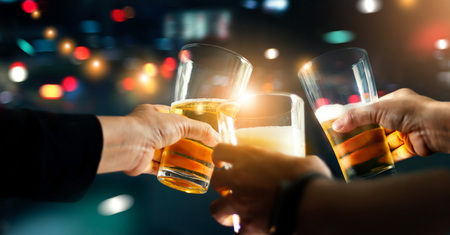Navigating Bar and Brewery Licensing in the United States
Starting a bar or brewery is an exciting journey, but before you pour your first pint, youll need to tackle some important paperwork. In the U.S., opening any business that serves or produces alcohol means dealing with licensing requirements at the federal, state, and local levels. Lets break down what you need to know to keep your dream on track.
Federal Licensing Requirements
If youre opening a brewery or planning to produce alcohol (even in small batches), youll need approval from the Alcohol and Tobacco Tax and Trade Bureau (TTB). This process can take several months, so plan ahead! The TTB will review your application for things like ownership background, location details, and your brewing process.
Common Federal Permits
| Permit Type | Who Needs It? | What It Covers |
|---|---|---|
| Brewery/Distillery Permit | Brewery owners | Production of beer or spirits |
| Wholesalers Basic Permit | Distributors | Selling alcohol to other businesses |
| Importer’s Basic Permit | Importers | Bringing alcohol into the U.S. |
State Licensing Requirements
This is where things get a bit tricky. Each state has its own rules about selling and serving alcohol. Some states are “control states,” meaning the government sells all liquor; others let private businesses do it. Youll usually need:
- A state liquor license (type depends on if you serve beer, wine, spirits, or all three)
- An additional license if you want live music, outdoor seating, or late-night hours
- Background checks and sometimes fingerprinting
Examples of State License Types
| License Name | Covers Beer? | Covers Wine? | Covers Spirits? |
|---|---|---|---|
| Beer & Wine License | Yes | Yes | No |
| Full Liquor License | Yes | Yes | Yes |
| Brewpub License | Brewed on site only | No/Optional* | No/Optional* |
*Some states allow brewpubs to sell their own wine or spirits if produced on-site.
Local Licensing and Zoning Laws
Your city or county will also have a say in where you can open your bar or brewery. Zoning laws decide what kind of businesses are allowed in each area. Make sure your desired location is zoned for alcohol sales—some neighborhoods have restrictions near schools or churches.
Zoning Considerations Table
| Zoning Type | Description |
|---|---|
| Commercial Zone (C) | Main streets, shopping areas—usually okay for bars/breweries |
| Mixed-Use Zone (MU) | A mix of residential and retail—permits may be required, extra restrictions possible |
| Residential Zone (R) | Mainly homes—bars/breweries usually not allowed here |
Common Pitfalls to Avoid
- Forgetting to check all levels of licensing (federal, state, local)
- Picking a location without checking zoning laws first
- Missing deadlines for renewals or paperwork updates
- Assuming one permit covers everything—it usually doesnt!
- Ignoring neighborhood concerns about noise or parking (this can delay permits!)
The licensing process might seem overwhelming at first, but taking it step by step will help you avoid costly mistakes and set up your business for success.
2. Finding the Perfect Location and Designing Your Space
Tips for Choosing a High-Traffic Site
Location is everything when it comes to opening a bar or brewery in the U.S. A great spot can make your business the neighborhood go-to, while a poor choice can mean empty seats. Here are some practical tips to help you pick the right place:
| Factor | What to Look For |
|---|---|
| Foot Traffic | Areas near entertainment venues, shopping districts, or busy intersections tend to have more potential customers walking by. |
| Accessibility | Make sure your location is easy to find and has good parking options or public transit access. |
| Local Competition | Check out other bars and breweries nearby. Too many competitors can be tough, but some competition shows there’s demand. |
| Neighborhood Vibe | Your concept should fit the local culture. Trendy neighborhoods may want craft beer and hip décor, while college areas might prefer casual sports bars. |
| Zoning Laws | Verify that your desired spot is zoned for alcohol sales before falling in love with a property. |
Negotiating Leases Like a Pro
The lease you sign can make or break your bar or brewery’s finances. Here’s how to approach negotiations:
- Length of Lease: Try for flexibility; shorter leases with renewal options let you grow or pivot if needed.
- Rent Increases: Ask for predictable rent increases instead of open-ended terms that could skyrocket costs.
- Build-Out Allowances: See if the landlord will contribute to renovations or improvements, especially if you’re upgrading utilities for brewing equipment.
- Exclusivity Clauses: Negotiate so no similar businesses can open in your building or complex—this protects your customer base.
- Exit Terms: Understand your rights if you need to break the lease early due to unforeseen circumstances.
Designing an Inviting Atmosphere That Attracts Your Target Market
Your bar or brewery’s design is about more than just looks—it sets the mood and draws in your ideal crowd. Keep these elements in mind:
Create a Welcoming Layout
- Bar Placement: Make the bar easy to see from the entrance and ensure plenty of seating around it.
- Tasting Areas: If you’re opening a brewery, set up comfortable tasting sections where guests can sample flights.
- Crowd Flow: Arrange tables and standing spaces so people can move easily without feeling cramped.
Add Local Flavor and Personality
- Décor Choices: Use reclaimed wood, vintage signs, or murals from local artists to give your space character and connect with the community.
- Lighting: Warm lighting creates a cozy vibe; adjustable lights let you shift from afternoon chill to evening buzz.
- Themed Nights & Features: Chalkboard walls for daily specials, unique tap handles, or games like shuffleboard all add fun touches guests remember.
Sizing Up Your Space Needs (Quick Reference Table)
| Bar/Brewery Size (sq ft) | Ideal Customer Capacity | Main Features To Include |
|---|---|---|
| <1,500 sq ft | 30-50 people | Cozy bar area, small kitchen, basic sound system |
| 1,500–3,000 sq ft | 50-100 people | Larger seating area, stage for live music/comedy, games section |
| >3,000 sq ft | 100+ people | Brewery tanks on display, private event rooms, outdoor patio space |
The right location and atmosphere set the stage for your bar or brewery’s success. Take time to research neighborhoods, negotiate smartly, and create a space that feels welcoming from day one.
![]()
3. Inventory Management and Supplier Relationships
Best Practices for Sourcing Beer, Spirits, and Supplies
Getting the right products for your bar or brewery is all about finding reliable sources and understanding what your customers want. In the U.S., working with local breweries and distilleries can set your business apart and help you build a loyal customer base. Always research your suppliers—look for quality, consistency, and fair prices. Don’t be afraid to ask for samples or visit their facilities. Building a good relationship means open communication; keep them updated on what’s selling well and what isn’t.
Common Sources for Bar & Brewery Supplies
| Product Type | Common Suppliers | Key Considerations |
|---|---|---|
| Beer (Craft & Domestic) | Local breweries, regional distributors | Freshness, unique offerings, delivery schedules |
| Spirits | National brands, local distilleries, wholesale distributors | Variety, pricing, licensing requirements |
| Non-Alcoholic Drinks | Beverage wholesalers, soda companies | Diversity, popularity with designated drivers/kids |
| Bar Supplies (glasses, napkins) | Restaurant supply stores, online retailers | Bulk discounts, durability, shipping speed |
| Snacks/Food Items | Local producers, food service distributors | Shelf life, dietary trends (vegan/gluten-free) |
Implementing Inventory Systems
An organized inventory system helps you avoid running out of popular items or overstocking slow sellers. Many American bars use cloud-based software like BevSpot or Partender to track stock in real time. These systems allow you to scan items in and out as they arrive or are used during service. They also alert you when it’s time to reorder based on your sales trends.
Benefits of Using Inventory Software:
- Saves Time: Automates counting and ordering.
- Cuts Costs: Reduces waste and theft.
- Keeps You Compliant: Helps maintain records for state alcohol audits.
- Makes Reporting Easy: Generates sales and usage reports automatically.
Simple Steps to Set Up Your Inventory System:
- Create a complete list of everything you sell (beer, liquor, mixers, snacks).
- Add starting amounts and set par levels (minimum stock before reordering).
- Track all deliveries and usage daily or weekly.
- Review reports each month to spot trends or issues.
- Adjust orders based on what’s selling best or slowest.
Building Strong Partnerships with Distributors
Your relationships with distributors are key to keeping your bar or brewery running smoothly. Meet with your reps regularly—they’ll give you the inside scoop on new products, special deals, and market trends. Treat them like part of your team: pay invoices on time, provide feedback on products, and invite them to events at your venue. Good distributor partnerships often mean better prices and access to limited-release items that can draw crowds to your place.
4. Building an Authentic Brand and Menu
Creating a Unique Brand Identity
Your bar or brewery’s brand is more than just a logo or a catchy name—it’s the personality and vibe your customers will remember. Start by defining what sets you apart from other local spots. Maybe it’s your commitment to sustainability, your passion for craft cocktails, or your love of live music. Think about the story you want to tell and make sure it shows up everywhere—from your signage to your social media presence.
Brand Elements to Consider
| Element | Description | Example |
|---|---|---|
| Name & Logo | Reflects your concept and stands out in the market. | “Hop & Harmony” with a guitar-shaped tap handle. |
| Ambiance | Décor, lighting, and music that match your brand personality. | Industrial-chic with Edison bulbs and local art. |
| Values | What matters to you—community, sustainability, fun? | Locally sourced ingredients and zero-waste initiatives. |
| Voice & Tone | The style of communication used in menus and online posts. | Friendly, playful messaging on Instagram. |
Developing Signature Drinks or Brews
If you want people talking about your place long after their first visit, signature drinks or house-brewed beers are a must. Work with talented bartenders or brewers to develop recipes that reflect your identity—think bold flavors, creative presentations, and fun names inspired by your city or neighborhood. Remember, these unique offerings can become your calling card.
Tips for Crafting Signature Items:
- Test different flavor combinations using local ingredients.
- Name drinks after landmarks, historical figures, or inside jokes locals will get.
- Create tasting flights so guests can sample your best creations.
- Offer non-alcoholic options with the same creativity as alcoholic ones.
Tailoring Your Food and Beverage Options for Local Tastes
Your menu should feel right at home in your community. Research what locals love—do they crave spicy wings during the game? Prefer vegetarian bites? Are craft sours trending over IPAs? Talk to potential customers, visit farmers markets, and check out competing bars to spot gaps and opportunities. Don’t be afraid to update your offerings based on feedback; flexibility is key!
Sample Menu Adaptation Table
| Community Preference | Beverage Idea | Food Pairing Example |
|---|---|---|
| Coffee culture strong in town | Coffee-infused stout or espresso martini | Tiramisu cupcakes or mocha brownies |
| Farm-to-table interest | Cocktails with fresh herbs/seasonal fruit brews | Local cheese board or farm-fresh salads |
| Sports fans crowd | Pilsners and light lagers, classic cocktails like Old Fashioned | Nashville hot chicken sliders, loaded nachos |
Pro Tip:
Host tasting events where regulars can help choose new menu items—it builds excitement and loyalty while ensuring you’re hitting the mark with local flavors.
5. Community Engagement and Local Marketing Strategies
How to Connect with the Neighborhood
Building a loyal customer base starts with getting to know your community. Take time to visit local businesses, introduce yourself to neighbors, and join area business associations or chambers of commerce. Simple gestures like offering a neighborhood discount or hosting a “locals’ night” can go a long way in showing you care about your patrons.
Neighborhood Connection Ideas
| Strategy | How It Helps |
|---|---|
| Attend community meetings | Shows you’re invested in local issues and builds trust |
| Sponsor local sports teams | Puts your brand in front of families and fans |
| Feature local artists or musicians | Brings new faces into your bar or brewery |
Organize Events That Bring People Together
Events are powerful tools for attracting first-timers and keeping regulars excited. Consider trivia nights, live music, food truck rallies, or beer release parties. For breweries, brewery tours and tasting events are always popular. Make sure to promote these events well in advance through flyers, email newsletters, and social media.
Event Planning Tips
- Keep it consistent: Regular weekly or monthly events create habits.
- Partner with other businesses: Co-hosting expands your reach.
- Support good causes: Charity events boost goodwill and attract press.
Leverage Social Media for Authentic Engagement
Your online presence is just as important as your physical one. Use Instagram, Facebook, and X (formerly Twitter) to share behind-the-scenes photos, announce events, and highlight customers enjoying your space. Respond quickly to comments and messages—people love when their favorite bar or brewery talks back!
Sample Social Media Content Calendar
| Day | Post Idea |
|---|---|
| Monday | Bartender spotlight or staff story |
| Wednesday | Upcoming event announcement |
| Friday | User-generated content (customer photo) |
Form Partnerships to Grow Your Loyal Customer Base
Create win-win relationships by collaborating with local food trucks, coffee shops, or gyms. You could offer joint promotions like “beer and burger” nights or host pop-up markets featuring local vendors inside your space. These partnerships help you tap into new audiences while supporting fellow small businesses.
Partnership Examples
- Coffee Shop Collaboration: Coffee-infused stouts brewed together for cross-promotion.
- Food Truck Fridays: Rotate different trucks each week for variety.
- Brewery + Yoga Studio: Host “Yoga & Brew” mornings to blend wellness with fun.
If you make an effort to be part of the neighborhood and stay active both online and offline, your bar or brewery will quickly become a beloved local hangout spot.


